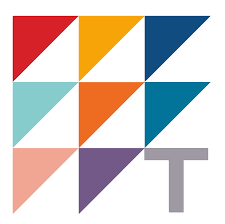IT Security Analyst – Montreal
Puntos Clave
Our personal data is now digitized and connected, so it is essential to be able to guarantee its security.
Companies, agencies and individuals require the services of the best experts to design solutions, perform penetration tests and ensure the overall security of the digital infrastructure of their business operations.
The Trebas Institute’s Computer Security Analyst program will train you in best practices in computer security. This will give you the tools and skills to participate in the development of models, systems or resources to protect computer data.
Professional Opportunities
Our graduates will be able to pursue successful careers in the following roles:
- Analyst – computer systems
- IT Business Analyst (Information Technology)
- Business Analyst
- Computer applications analyst
- Systems Security Analyst
- Systems analyzer
- IT Business Systems Analyst
- Information systems / computer systems analyst
- Computer Systems Analyst
- IT quality assurance analyst
- Software quality assurance analyst
- Computer systems quality assurance analyst
- Information systems analyst
- Systems Security Analyst
- IT Security Analyst
- Internet Security Analyst
- Information Technology Analyst
- Functional analyst in computer systems
Skills and competences
Throughout this program, you will develop some of the following skills and competencies:
- Process information related to the work environment in the field of computing.
- Install and manage computers
- Use programming languages
- Solve IT problems with math
- Use office software
- Implement a local computer network
- Security prevention operations on information security
- Interact in a professional context
- Evaluate hardware and software components
- Provide computer support to users
- Implement computer networks, interconnection devices, computer networks
- Monitor computer networks
- Collaborate in the design of a computer network
- Data manager
- Computer specialist
- Database / IT Management Supervisor & lt;
Program structure
Admission requirements
Under the provisions of section 4 of the University Education Regulations regarding admission conditions, a person who has received instruction deemed sufficient by the university and meets any of the following conditions may be admitted to a study program leading to a Certification of university studies. :
- The person has interrupted full-time studies or has completed full-time post-secondary studies for at least 2 consecutive terms or 1 school year;
- The person is covered by an agreement between the university and an employer or by a government study program;
- The person has interrupted his studies full-time for a period and has completed post-secondary studies full-time for a period; or
- The person has a high school vocational diploma.
Specific admission criteria for an ACS / AEC
A person applying for an ACS / AEC program must have sufficient oral and written proficiency in the language of instruction. A person who has studied outside of Quebec must provide the result of a proficiency test for the language of instruction.
For programs where the language of instruction is English, the accepted language proficiency tests are:
- International English Language Testing System (IELTS): 5
- Test of English as a Foreign Language (TOEFL) IBT: 55
- Cambridge English Language Assessment: 162
- Canadian Academic English Language (CAEL): 40
- Academic PTE: 42
- Duolingo: 85
Learn more about our educational offer
Request your quote
An advisor will contact you by phone and email within the following hours


